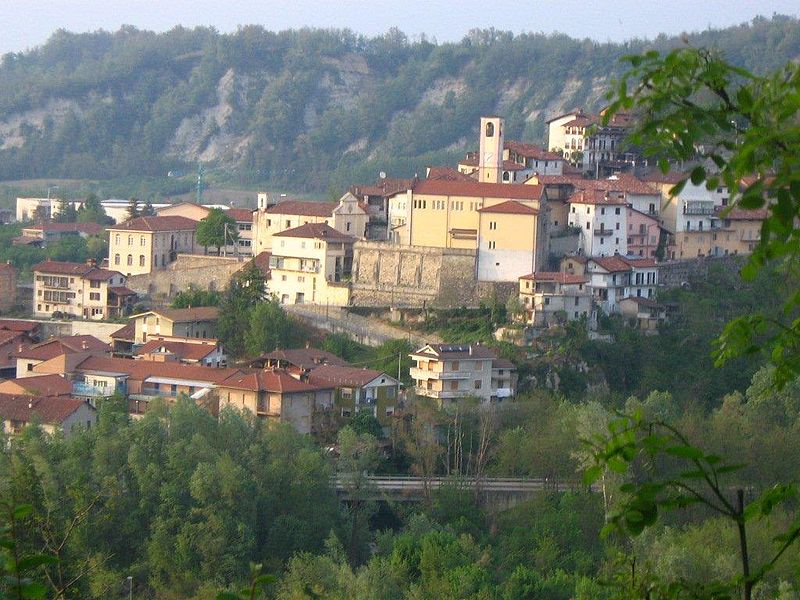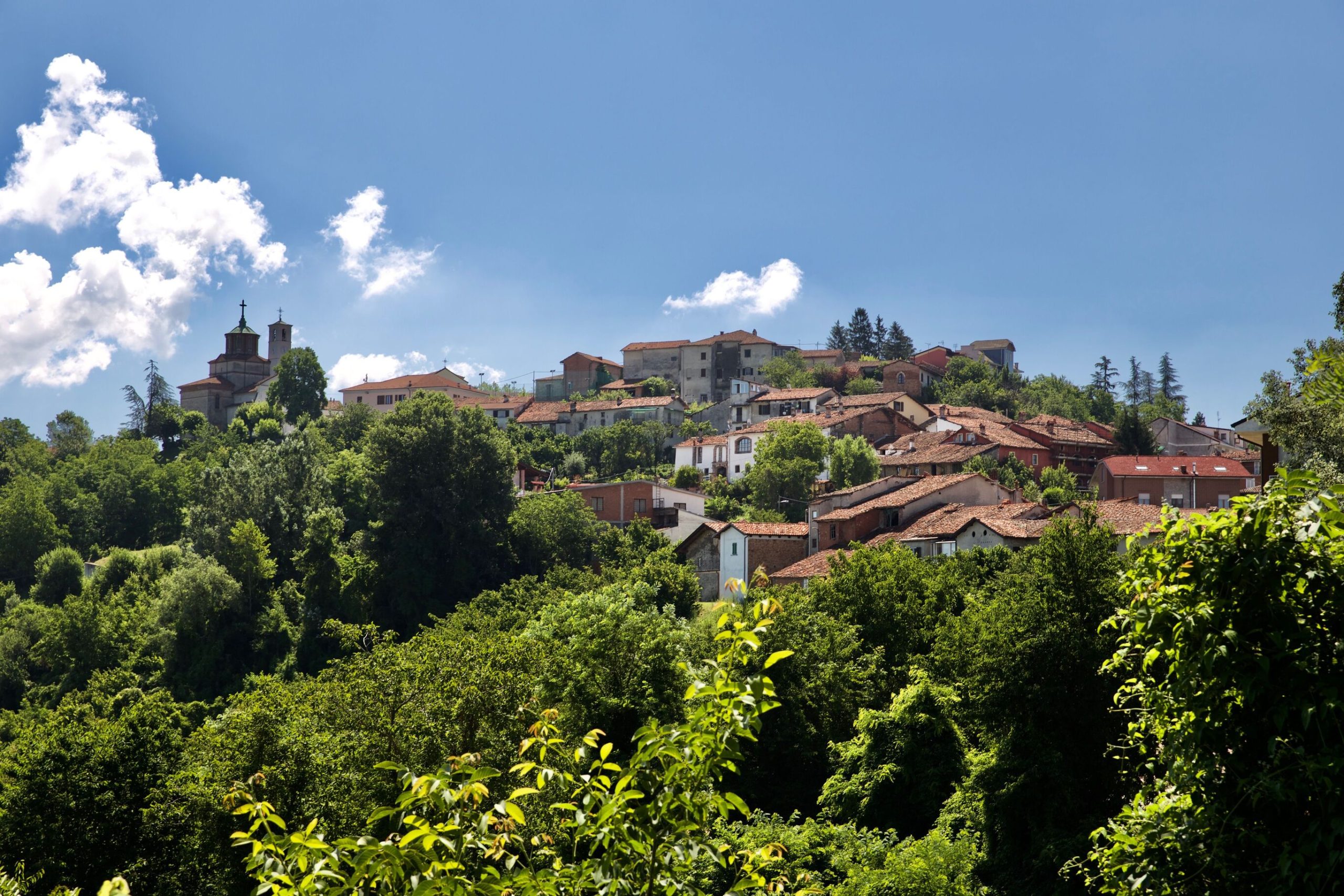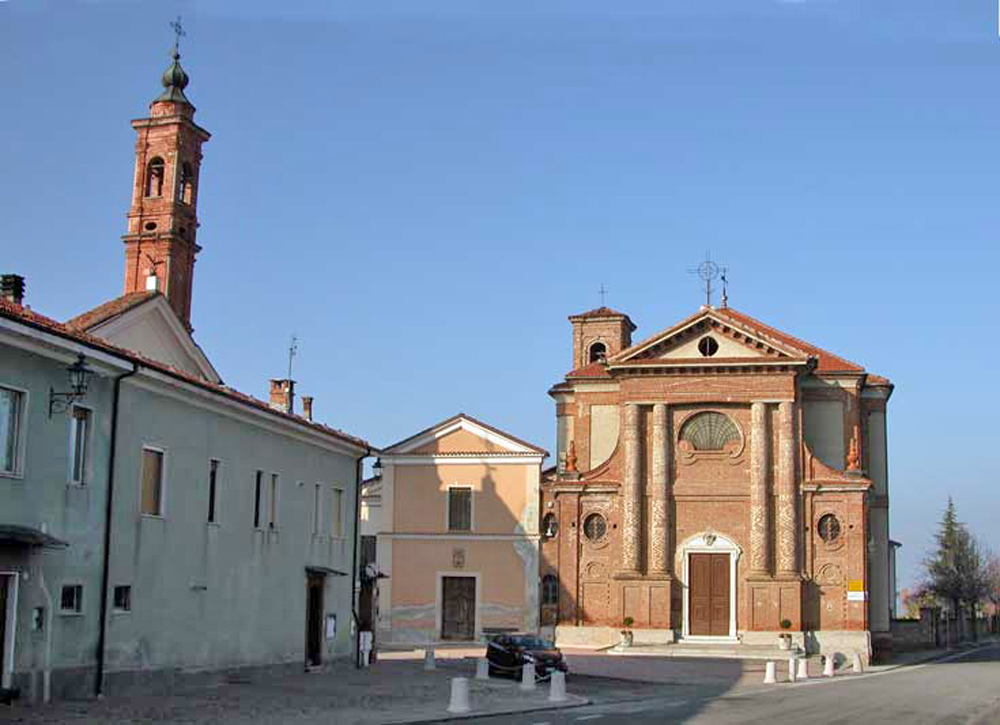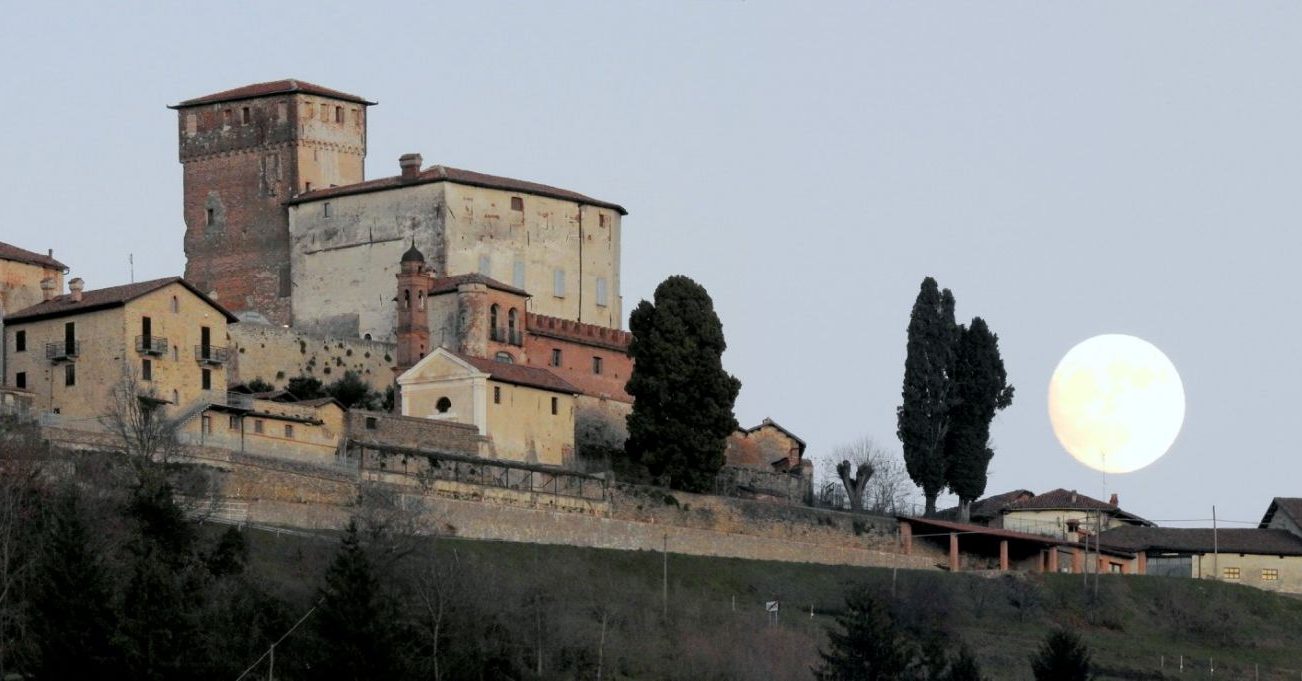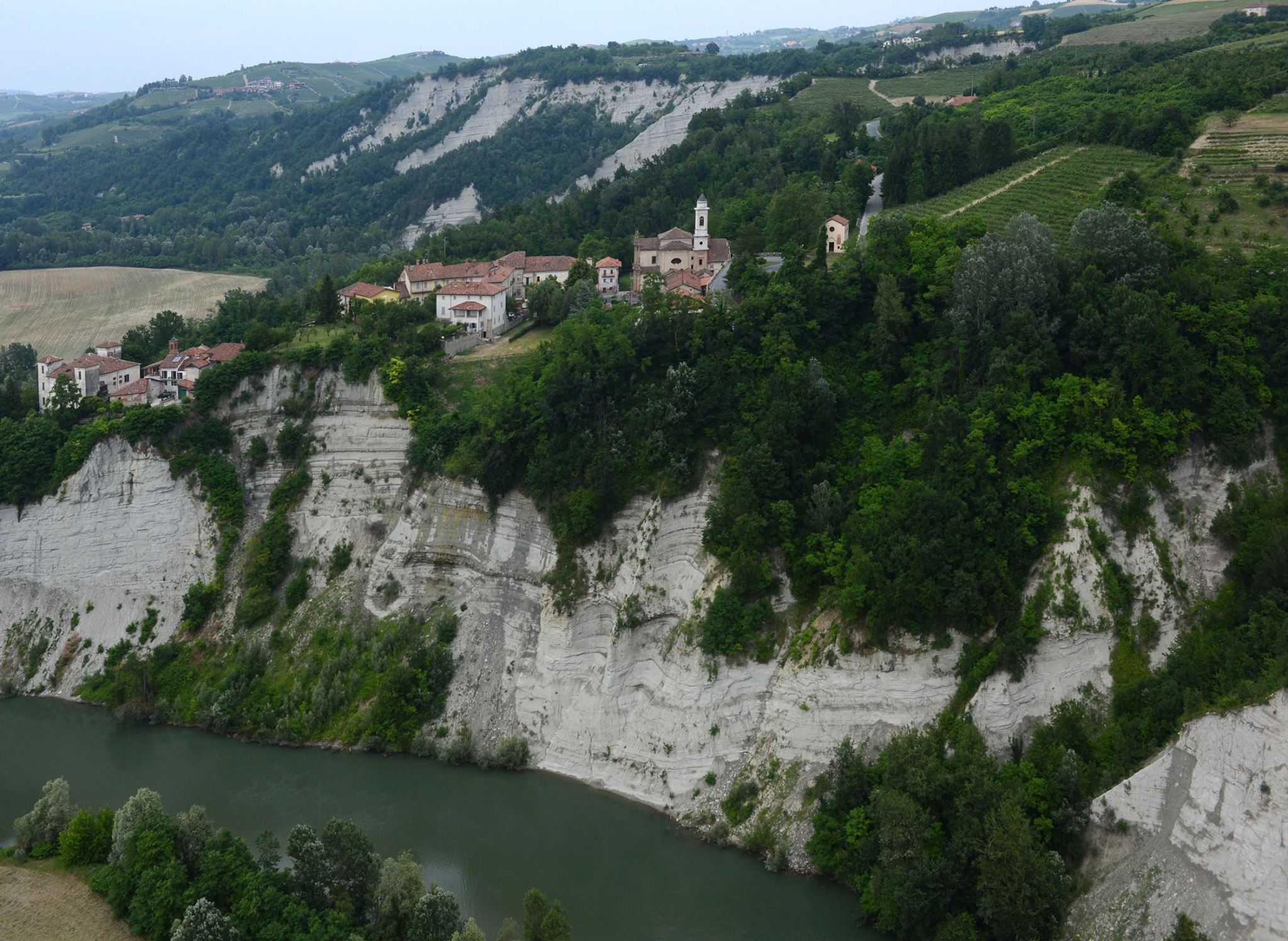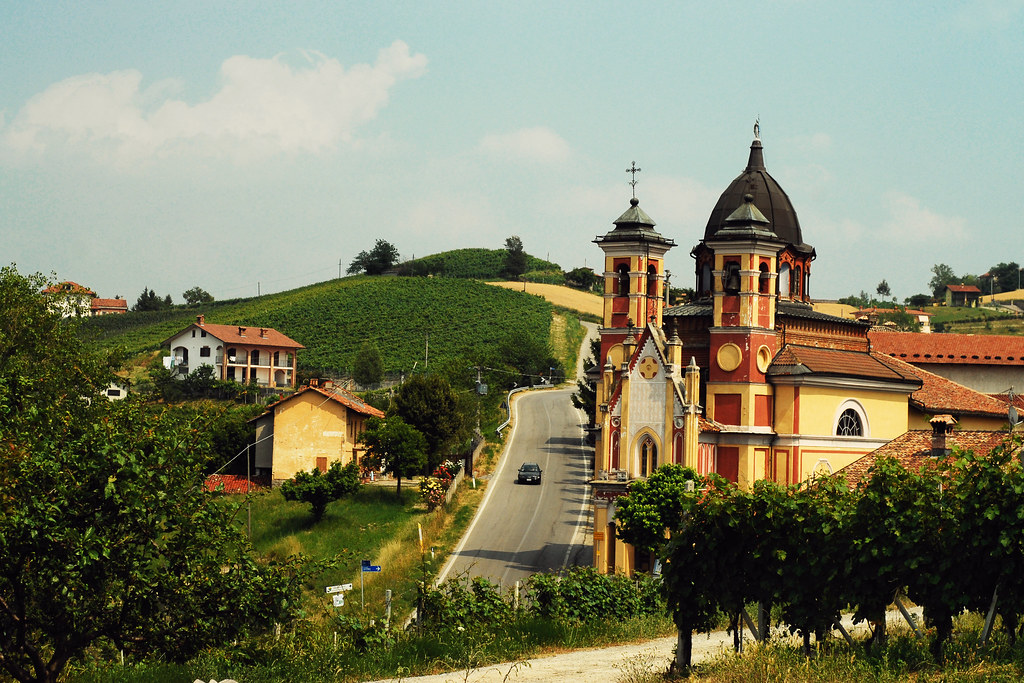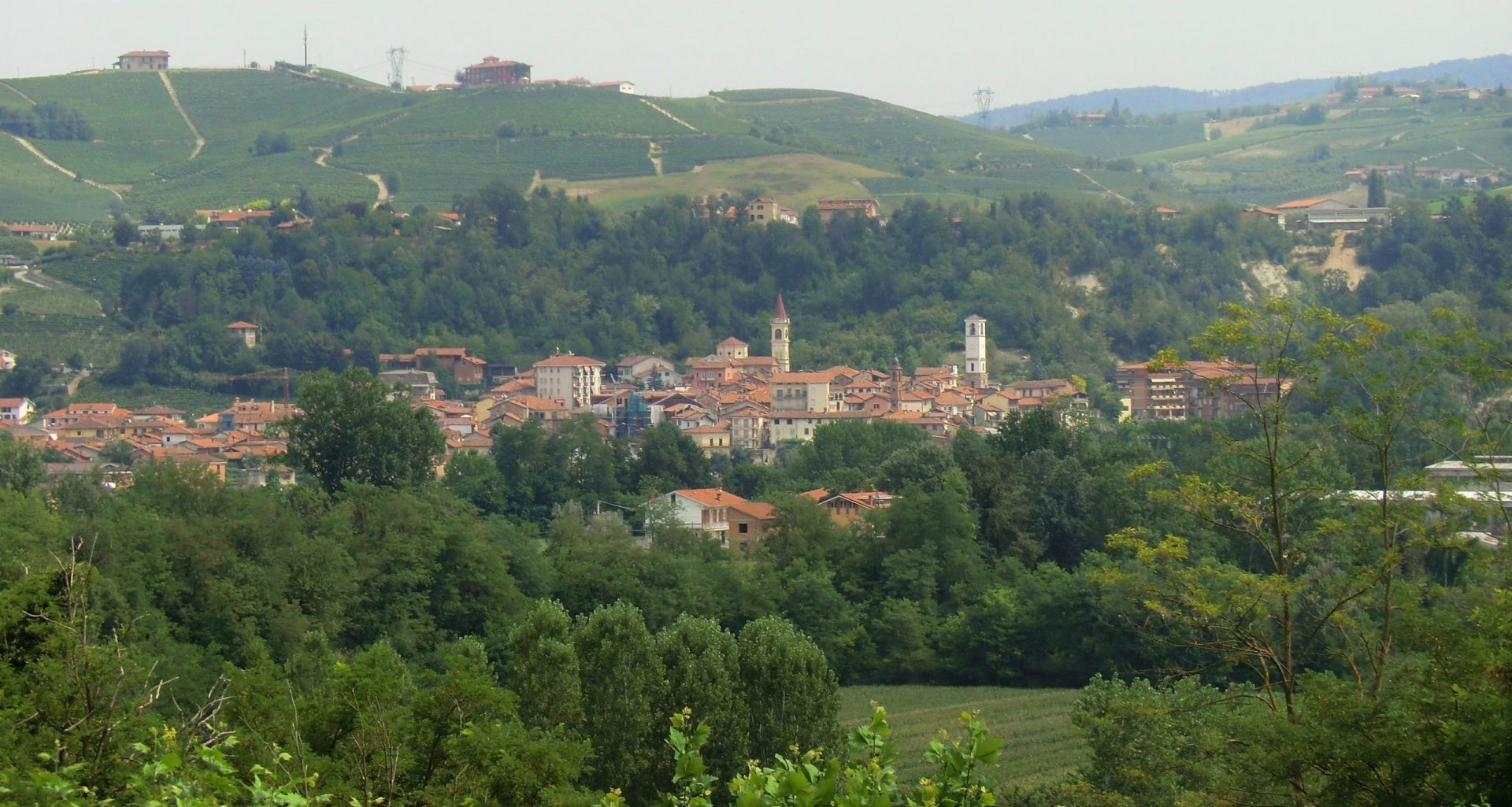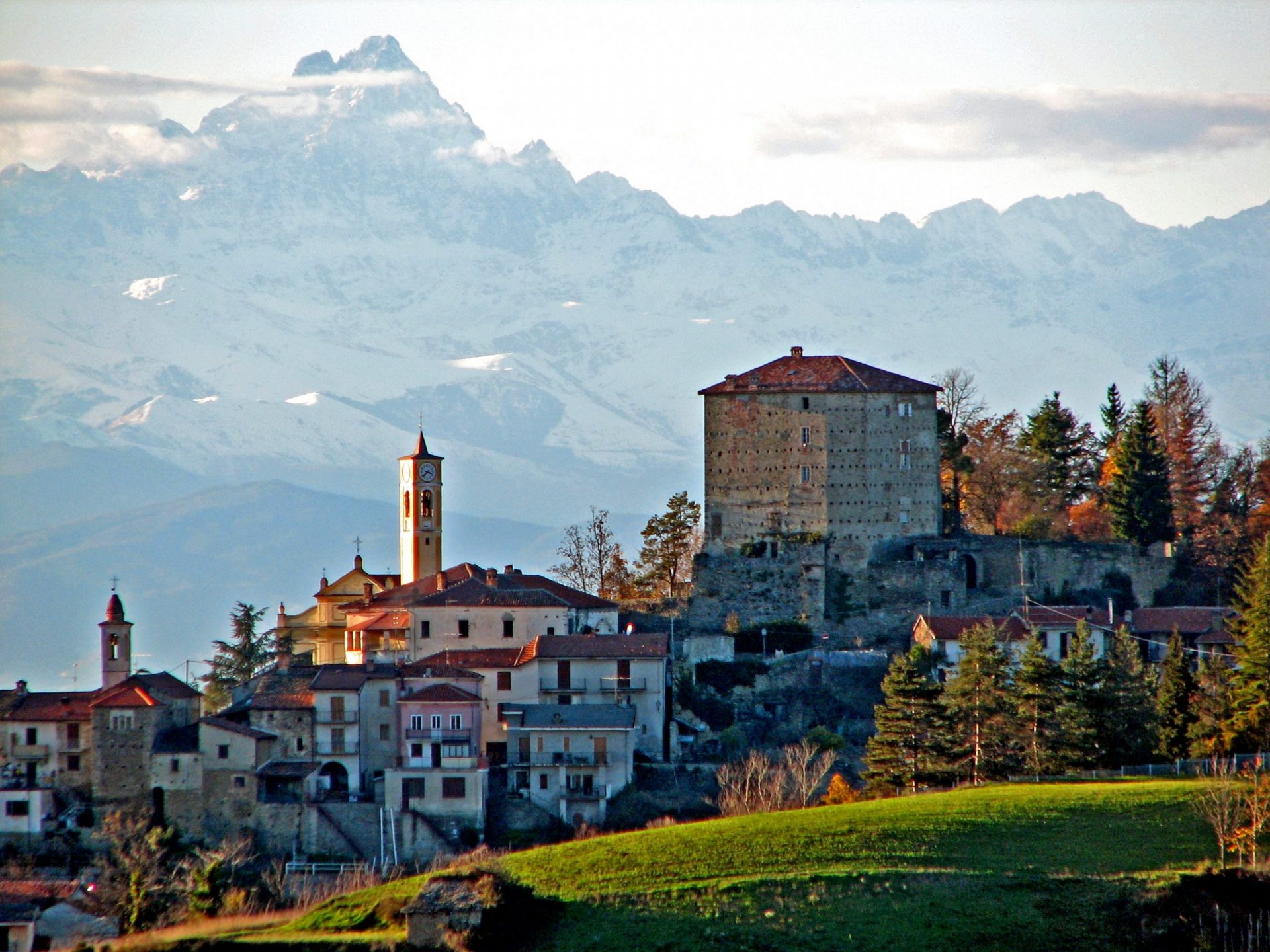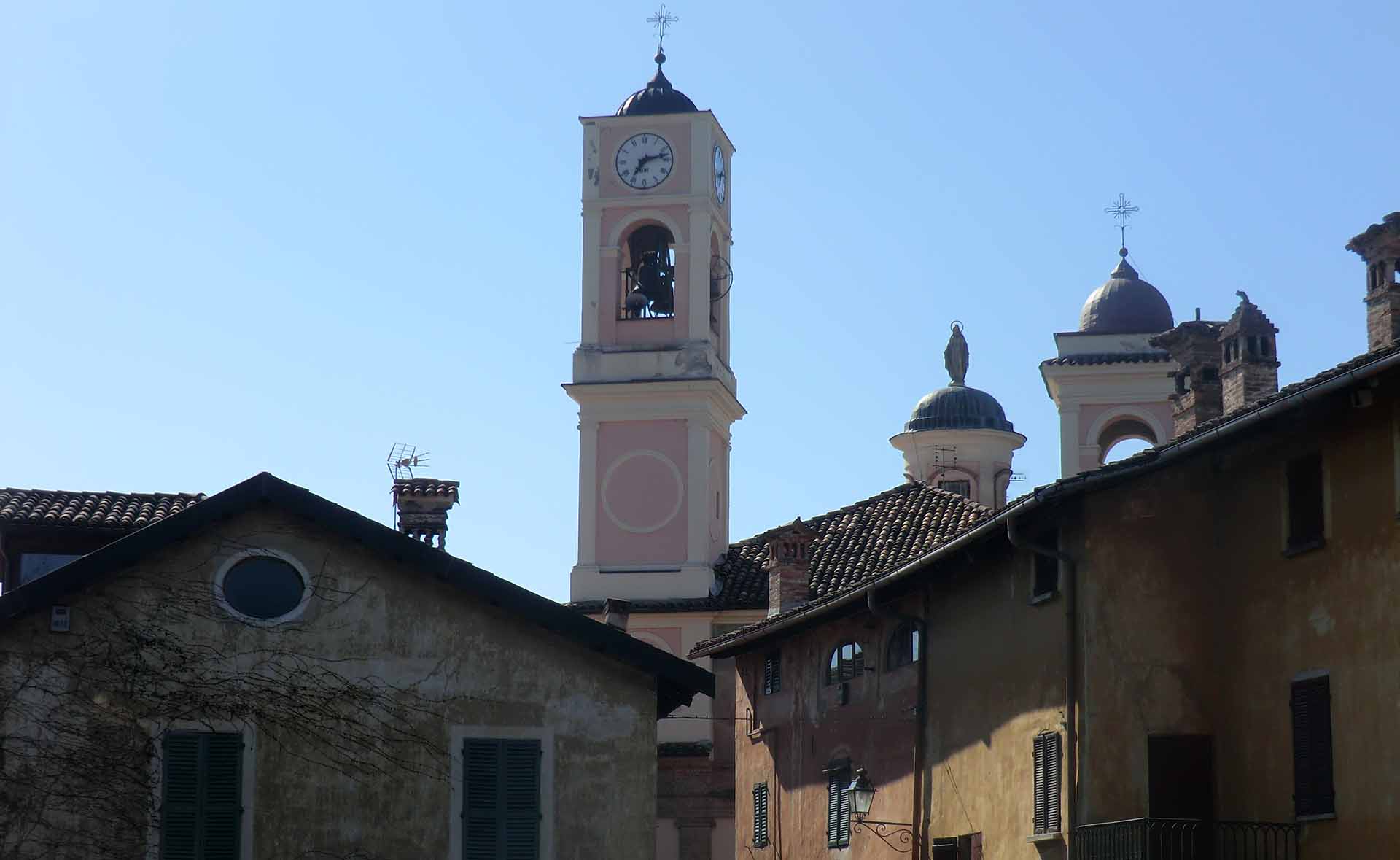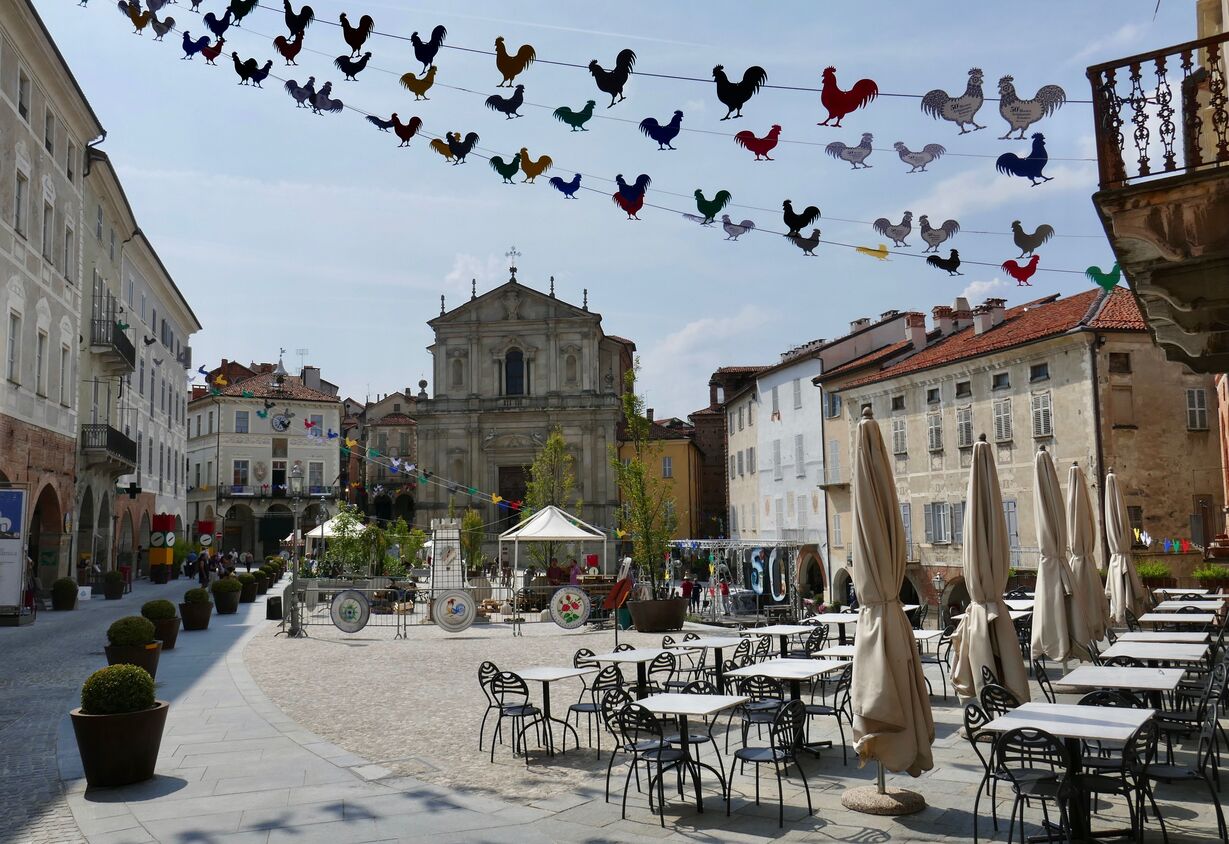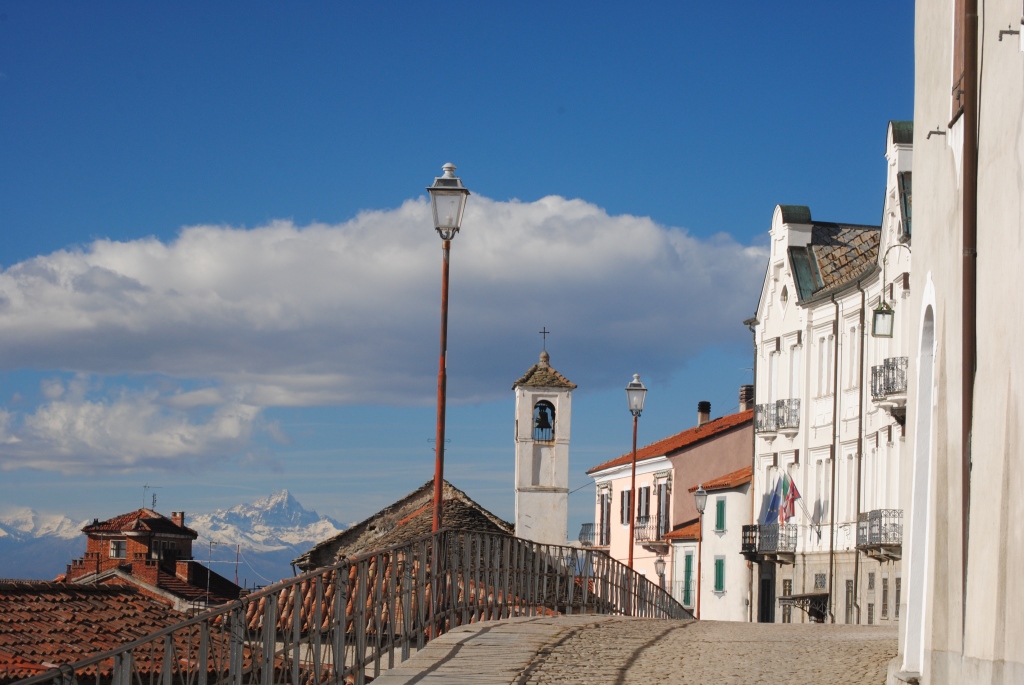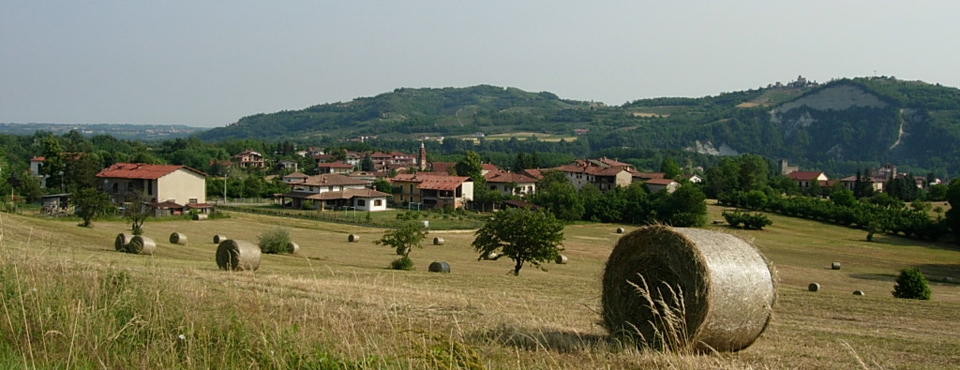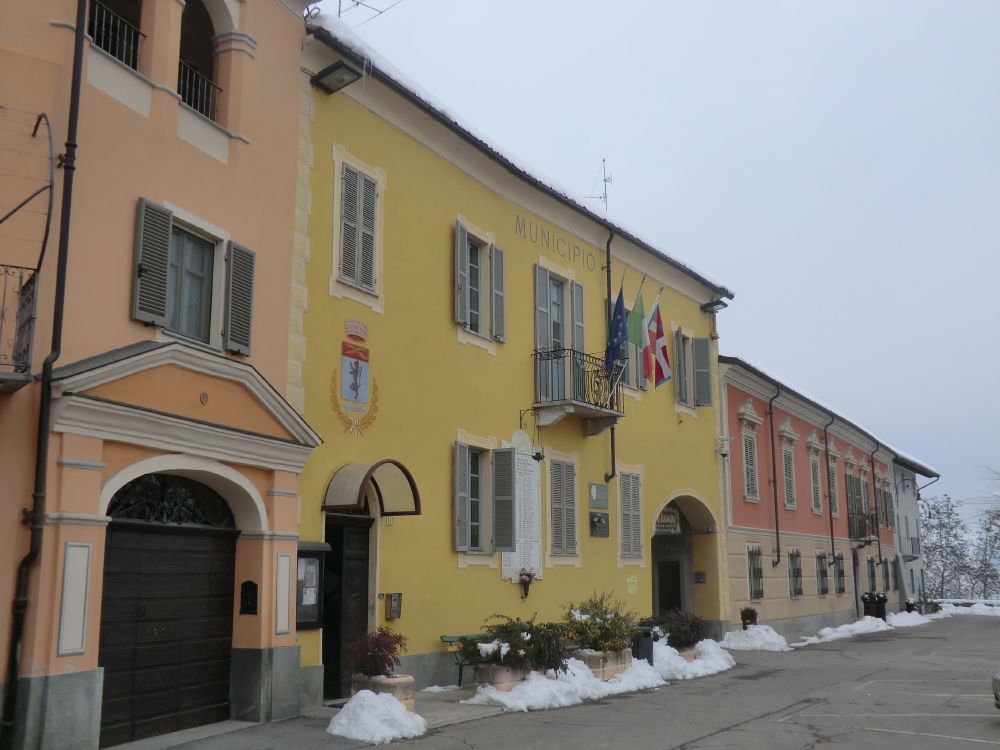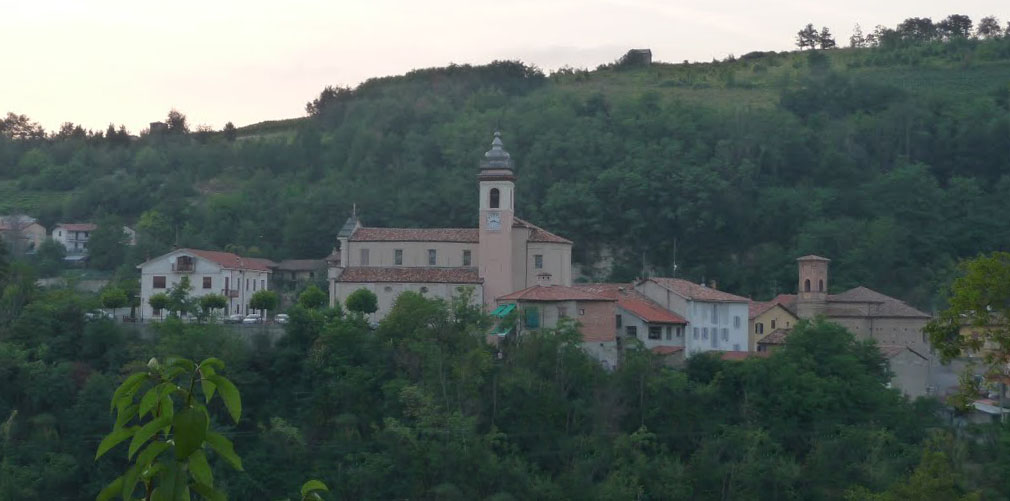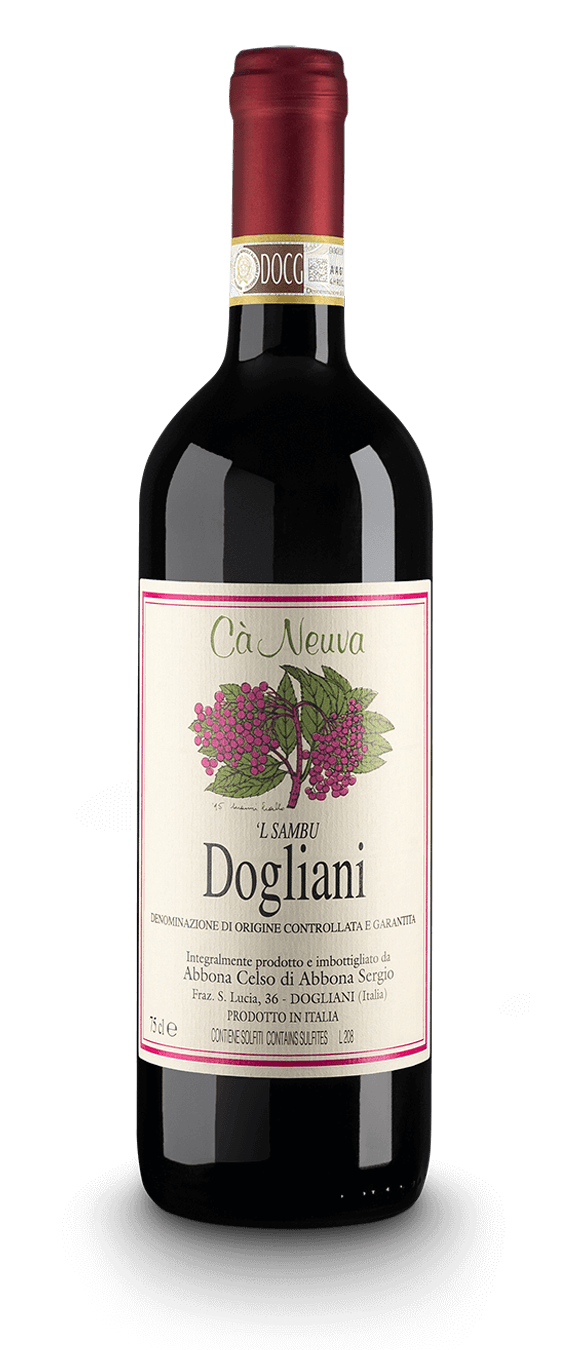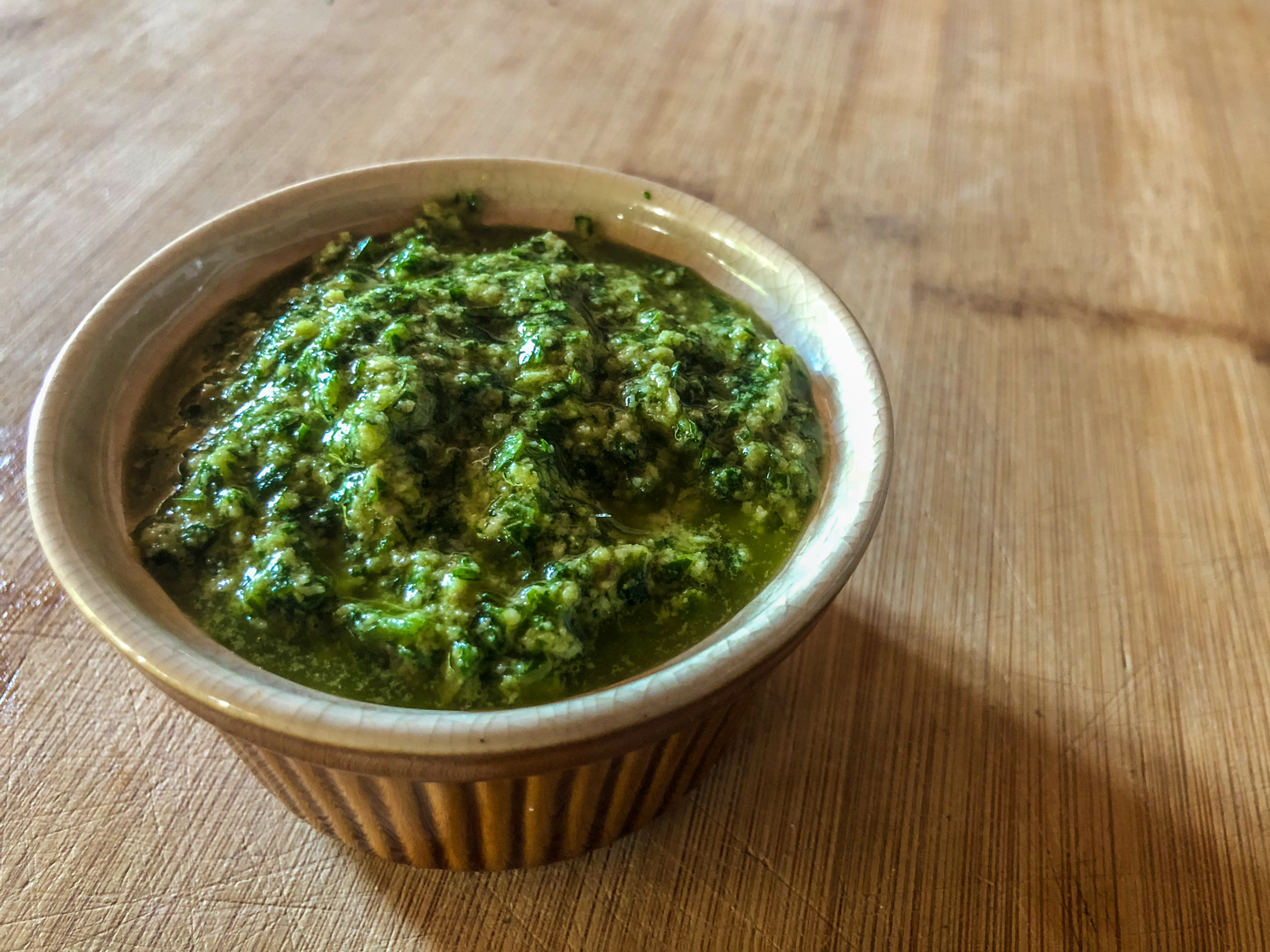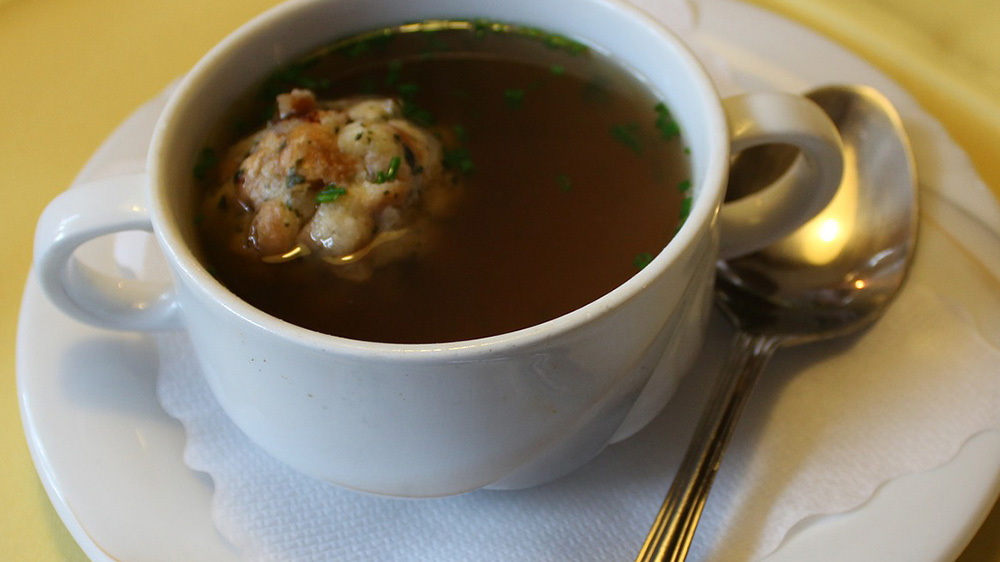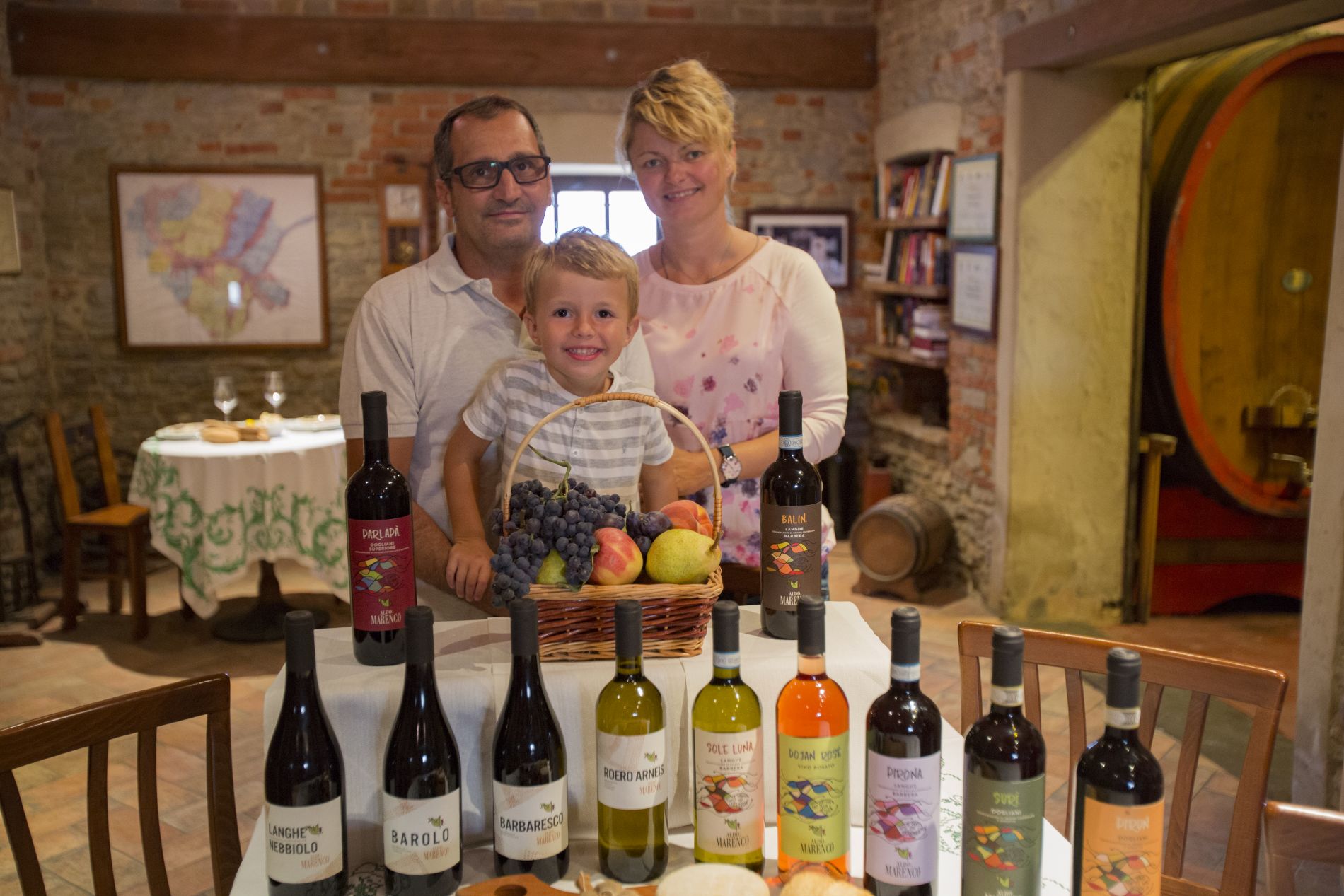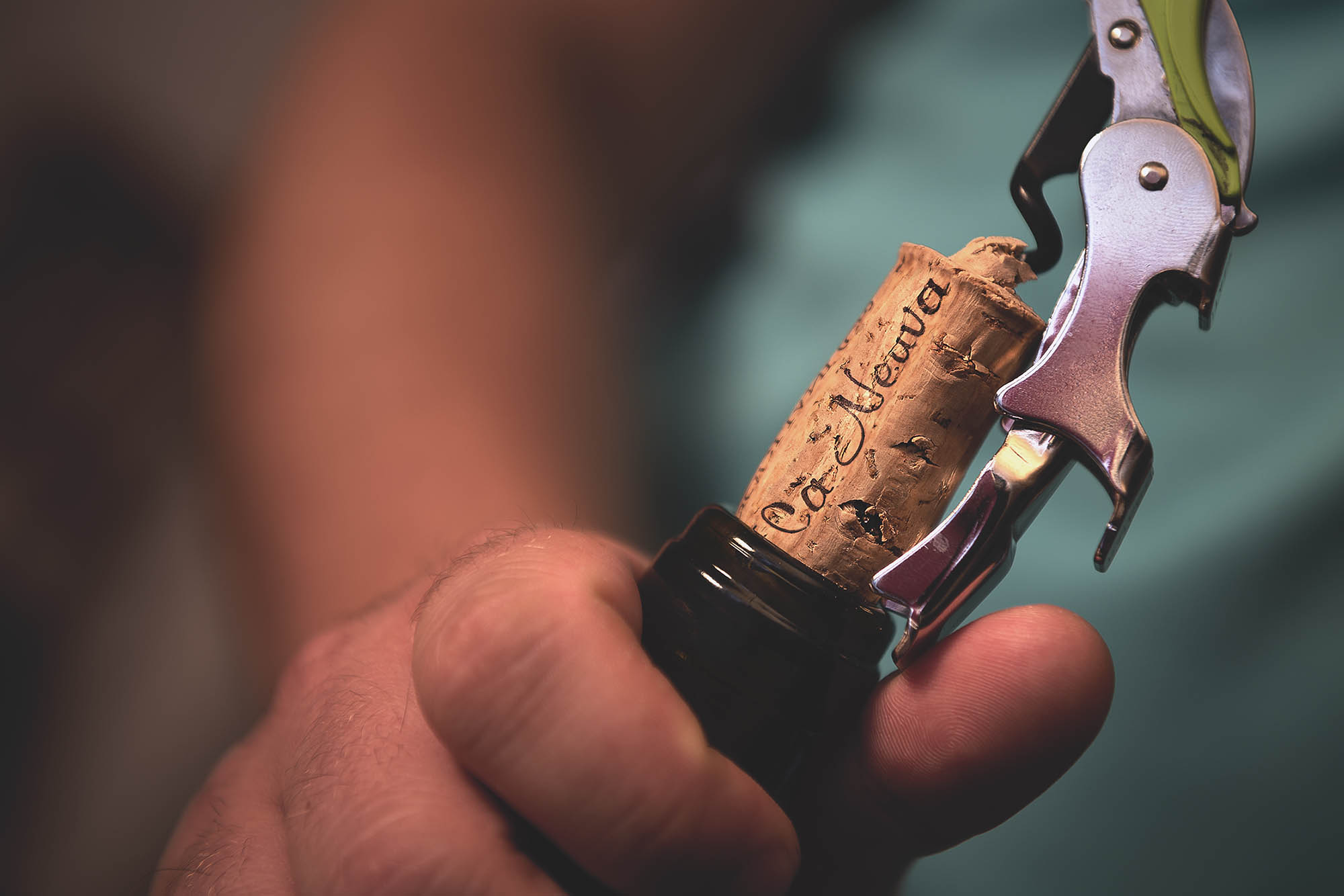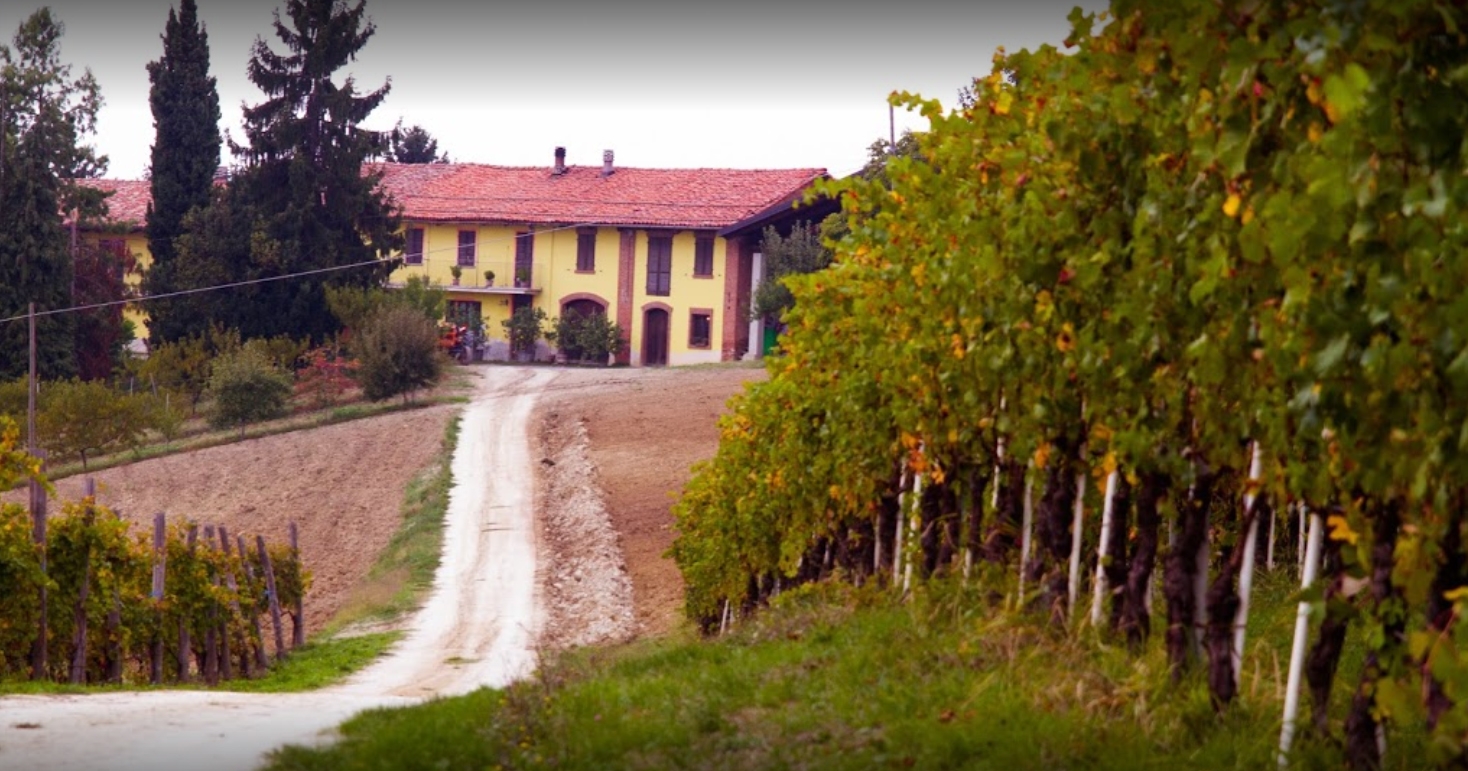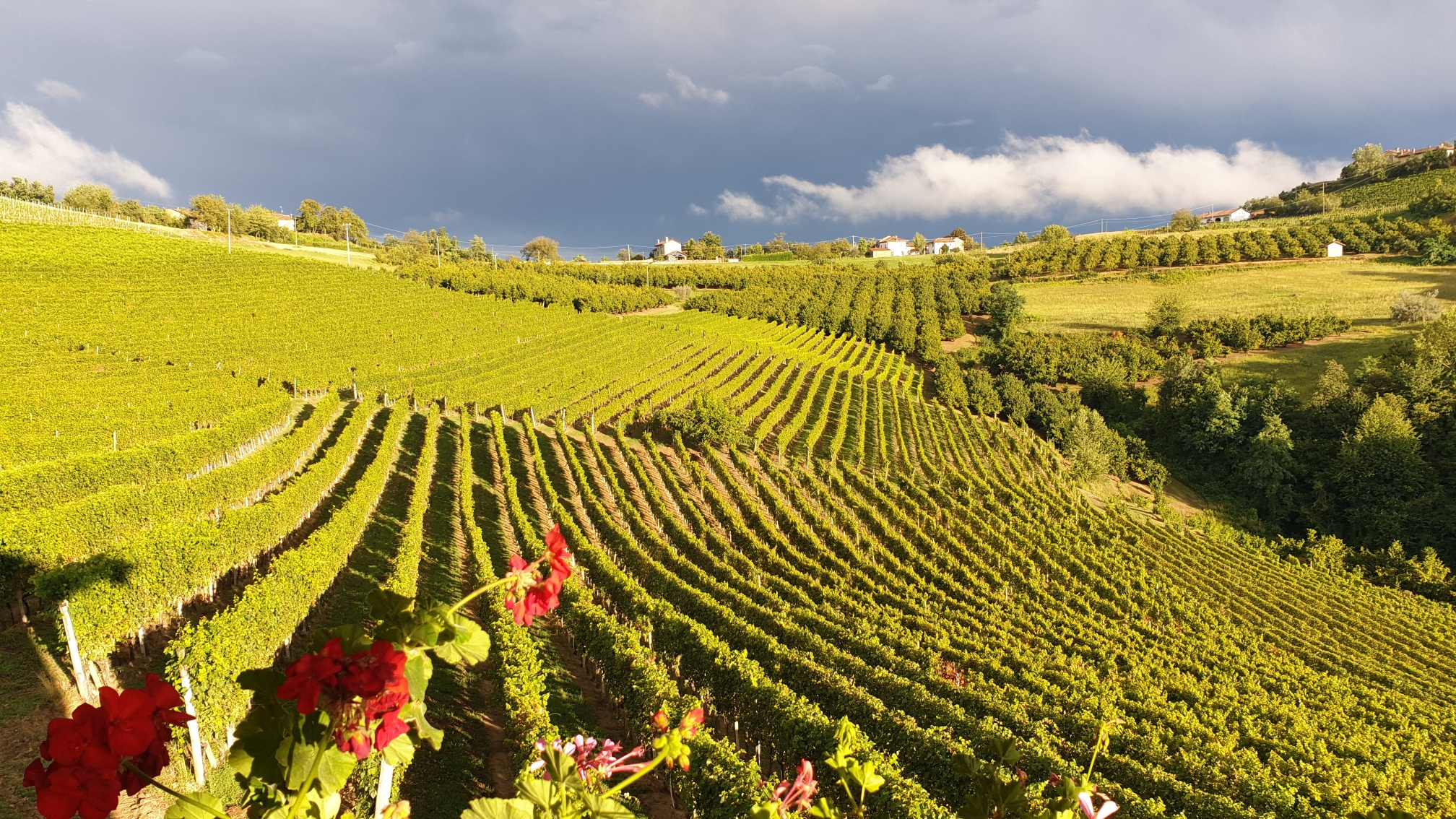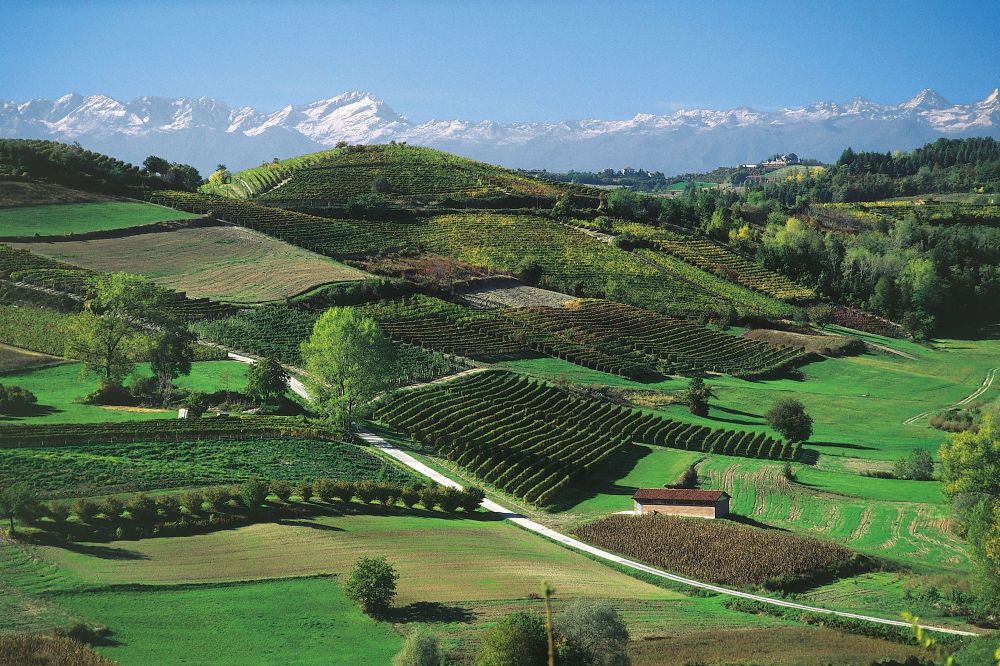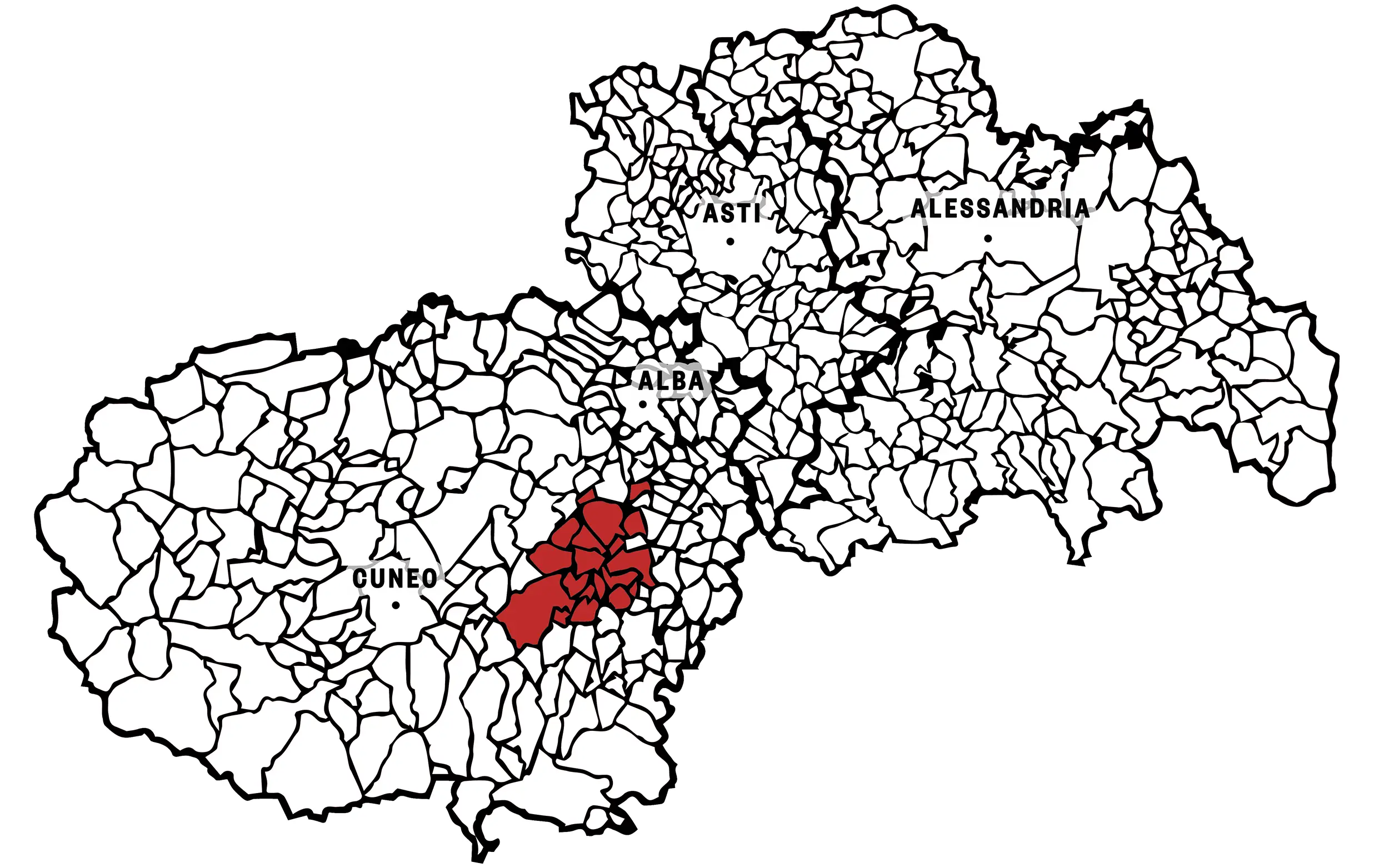
Dogliani DOCG
Emblematic of the town of the same name and the surrounding area, it is in this area where the winemaking tradition is strongly linked to the Dolcetto grape that the vine finds its best expression. This is a difficult grape to grow and even more so to make wine from, but thanks to the hard work and dedication of winemakers it is capable of giving wines of good balance and great finesse.
It is characterized by its deep ruby red color, while the nose offers a bouquet of fruity scents, with notes of cherry, blackberry, violet and sometimes a pleasant spiciness. In the mouth, this wine stands out for its freshness and liveliness, with pleasant acidity and well-integrated tannins.
It is often prized for its ability to pair with a variety of dishes in Piedmontese cuisine, thanks to its versatility and distinctive personality and ability to delight the palate of connoisseurs. It is a wine that can be enjoyed young, but some older vintages can develop additional complexities.
Although the specification indicates only one year of aging for Superior status, you will be surprised to discover that there are companies that do not sell it before 4 years.
Vines
Appellation
Color
Type
Min. alcohol
Variants
Established on

Cordontura, Diratamento, Svinatura sono solo alcuni dei lavori in vigna e in cantina per ottenere un Dogliani DOCD di qualità
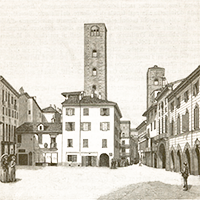
The history of Dogliani DOCG
From the empire to the present
The first documented evidence of Dolcetto grapes in Dogliani is from 1593, with an ordinance against early harvesting.
Vine cultivation in the Langhe is a very ancient practice, already present in Roman times. However, we have to wait until 1593 for official certainty of the presence of dolcetto grapes in Dogliani.
In fact, a city municipal ordinance was enacted that year regulating grape harvesting to prevent an early harvest, with grapes not fully ripe. In case of noncompliance, the entire crop would be confiscated:
Orders for vindications. No one dare harvesting the grapes before the feast of San Mateo (September 21st), and if somebody out of necessity or other cause will have to harvesting some Dolcetto or other grape, will have to get a license from the deputy. Sanction will be the confiscation of all the grapes.
The President's wine
Dolcetto di Dogliani was the wine of President Einaudi, a native of these lands, who, as a convinced admirer as well as a producer himself, was among the first to lay the groundwork for a concrete valorization and affirmation of this wine.
It is undoubtedly the dolcetto that comes closest to the ideal perfection of the character of vinosity, young and jovial, fresh and fragrant, of moderate acidity, sincere and immediate, revealing its birth on perhaps the highest slopes of the Langa lands, where it finds conditions of great favor.
As for the Dogliani appellation, its history is very recent: after an initial recognition in 1974 with the DOC Dogliani, we have to wait until 2005 for the DOCG.
The current DOCG, however, was updated in 2011, when the previous Dolcetto di Dogliani DOC, Dolcetto delle Langhe Monregalesi DOC and Dolcetto di Dogliani Superiore DOCG were also unified under this designation with the approval of the new specification. This reduces the number of DOCs, while the production territory of the Dogliani DOCG increases.

Dogliani DOCG: Terroir
Cool and stable climate: the Dogliani and the Alps.
The Langhe area of reference is to the south, toward Liguria, where the climate is cooler due to the proximity of the Alps. Dolcetto grapes, in fact, do not like temperature changes and extremes, preferring well-sunny, ventilated and not too humid soils.
The ideal soil conformation is clay-limestone, the famous white soils located mainly in the hills. Valley floors and flat areas are excluded. The maximum height allowed is 800 meters above sea level.
In addition to grapevines, in the Doglianese and Monregalese areas we find crops of hazelnuts, fruits, vegetables, cereals, meadows for animal husbandry, and forests.
The area, like its inhabitants, still retains the characteristics proper to the Piedmontese: stubbornness and attachment to traditions that are reflected in the wines and cuisine.
The specification lists the 21 municipalities in the province of Cuneo that are allowed to produce Dogliani DOCG. These are joined by producers in the province of Savona who already hold the permit.
The established training form is guyot, with manual pruning.
Preferred Altitude
Preferred Soil
Crus / MGA
Towns where it's produced
Dogliani DOCG: Vines
The Dogliani DOCG is a single varietal wine, and therefore can be made exclusively by Dolcetto grapes
The bunch of Dolcetto is a long pyramid in shape, and the grapes are round, with a blue-black skin. The fruit ripens in mid September. you can read more about Dolcetto here.

Dogliani DOCG: Features
A Dolcetto for the whole meal, to be paired with simple dishes
Classic Dogliani has low acidity and hints of fruit that contrast the almond finish. It is an easy-drinking, instant-drinking wine that goes well with simple dishes.
Not too alcoholic, it is considered an all-meal wine because it is bitter and has great pairing ability.
The Superior
It is amore modern interpretation of Dogliani, enhancing less common characteristics and, precisely because of this peculiarity, is capable of surprising those who taste it.
It is characterized by more complex aromas and a more important structure.
Sight
Dogliani has a distinctive color that stands out for its intensity and vibrancy: it sports a ruby-red hue that may vary slightly depending on the age and winemaking techniques used.
In younger Dogliani, the color tends to be bright and vibrant, with purplish or purple hues that reflect the wine's freshness and youth. These violet hues are particularly pronounced in newly bottled wines and tend to fade with aging.
With evolution and aging, Dogliani DOCG matures toward darker and deeper tones. The ruby red is enriched and can develop garnet undertones, especially in wines that have spent more time in wooden barrels or bottles.
These darker tones are indicative of a wine with greater complexity and structure, often accompanied by an intensification of aromas and flavors.
Color density in Dogliani DOCG is generally high, reflecting theabundant presence of tannins and polyphenols in the Dolcetto grape. These compounds, in addition to contributing to the structure and longevity of the wine, also influence its color intensity.
In summary, the color of Dogliani DOCG is an indicator of its character: in young wines, it shows the freshness and liveliness typical of Dolcetto, while in older wines, it reveals complexity and depth, inviting a richer and more layered tasting experience.
Nose
Dogliani DOCG is renowned for its unique and complex olfactory qualities and offers an aromatic bouquet that reflects the richness and diversity of the Dolcetto grape variety.
The distinguishing characteristic of this wine is its range of intense aromas that evolve with both age and winemaking techniques.
In younger Dogliani DOCGs, lively fruity notes are typically perceived. These scents are dominated by fresh berries such as blackberries, raspberries and strawberries, accompanied by hints of cherry and plum. This fruity freshness is often enriched by light floral nuances, such as violets and roses, which add a delicate and pleasantly aromatic dimension.
With aging, the aromas of Dogliani DOCG become more complex and layered. Fruity notes transform into aromas of ripe fruit and fruit under spirits, with hints of red fruit jam and nuances of dried fruits such as figs and prunes. In addition, tertiary notes such as tobacco, cocoa, spices (such as nutmeg and pepper), and sometimes a touch of leather or wet earth emerge, all of which enrich the olfactory experience.
In some Dogliani DOCGs, especially those aged in wood, hints of vanilla, roasting, coffee and slight smokiness can also be detected, resulting from the interaction between the wine and the oak barrels. These additional aromas lend greater complexity, balancing fruity intensity with warmer, more enveloping elements.
In general, the flavor profile of Dogliani DOCG is characterized by excellent intensity and persistence, making each sip a rich and multifaceted experience.
The variety of aromas, from the fruity immediacy of young wines to the complex evolved notes of more mature wines, testifies to the versatility and depth of this distinctive wine.
Taste
It is distinguished by a rich and complex flavor, which varies greatly depending on the age of the wine and the winemaking techniques used.
In its youth, Dogliani DOCG has a lively and fresh taste. The first sensation in the mouth is that of a pleasant acidity, typical of Dolcetto, which combines with soft but well-present tannins. Young Dogliani wines offer a flavor profile accompanied at times by a slight bitter note that is characteristic of the grape variety. This slightly bitter quality, combined with the freshness of the fruit, gives the wine a unique balance and pleasant drinkability.
With aging, Dogliani DOCG evolves toward a more rounded and complex flavor profile. The tannins soften further, melting into a velvety texture. Evolution leads to a more layered and complex palate, with a lingering finish that leaves memories of ripe fruit and sweet spices.
The distinguishing characteristic of Dogliani DOCG is its balance of acidity, tannins and alcohol. Despite the presence of abundant tannins, the wine retains a certain softness and roundness, making it pleasant to drink both at a young age and after several years of aging.
This balance makes it versatile in terms of food pairings, suitable for both delicate and more structured dishes.
In summary, Dogliani DOCG offers an intense and varied taste experience, characterized by the freshness and vivacity of young wines and the complexity and depth of more mature ones, reflecting the excellence and versatility of the Dolcetto grape variety.
Official regulation
Color
Perfume
Taste
Foam
Get a bottle directly from the producer
LoveLanghe Shop is a niche of great wines from the Langhe area: some unknown to most, some already quite recognized but perhaps hard to find in the big distribution, others in which we see potential but that have yet to grow.
Bottles are shipped directly from the winery to your home, with no intermediary.
Service
Serving Temperature
Dogliani DOCG is generally served at a temperature between 16°C and 18°C. This temperature allows its aromas and flavors to be fully appreciated.
Glasses
Use red wine glasses with a wide shape and a slight upward curve, such as the Burgundy or Bordeaux goblet to concentrate aromas and make tasting easier.
Conservation
Store Dogliani DOCG properly, preferably in a cool, dark cellar at a constant temperature. Keep the bottles lying flat so that the cork remains moist and preserves the freshness of the wine.
Tasting
Before tasting Dogliani DOCG, observe the color, smell the wine to catch the aromas, and then taste it to assess its taste, structure and length. Note the specific characteristics of that wine and try to appreciate its nuances.
Dogliani DOCG: what to pair it with
Dogliani DOCG is a versatile wine that pairs well with a variety of dishes, including red meats, aged cheeses, pasta dishes with rich sauces, mushrooms, and pork dishes.
With its structure and flavor profile, it pairs beautifully with several traditional Langhe dishes, such as vitello tonnato, braised beef in red wine, or plin (small ravioli) with meat sauce.
Recipes to pair with Dogliani DOCG
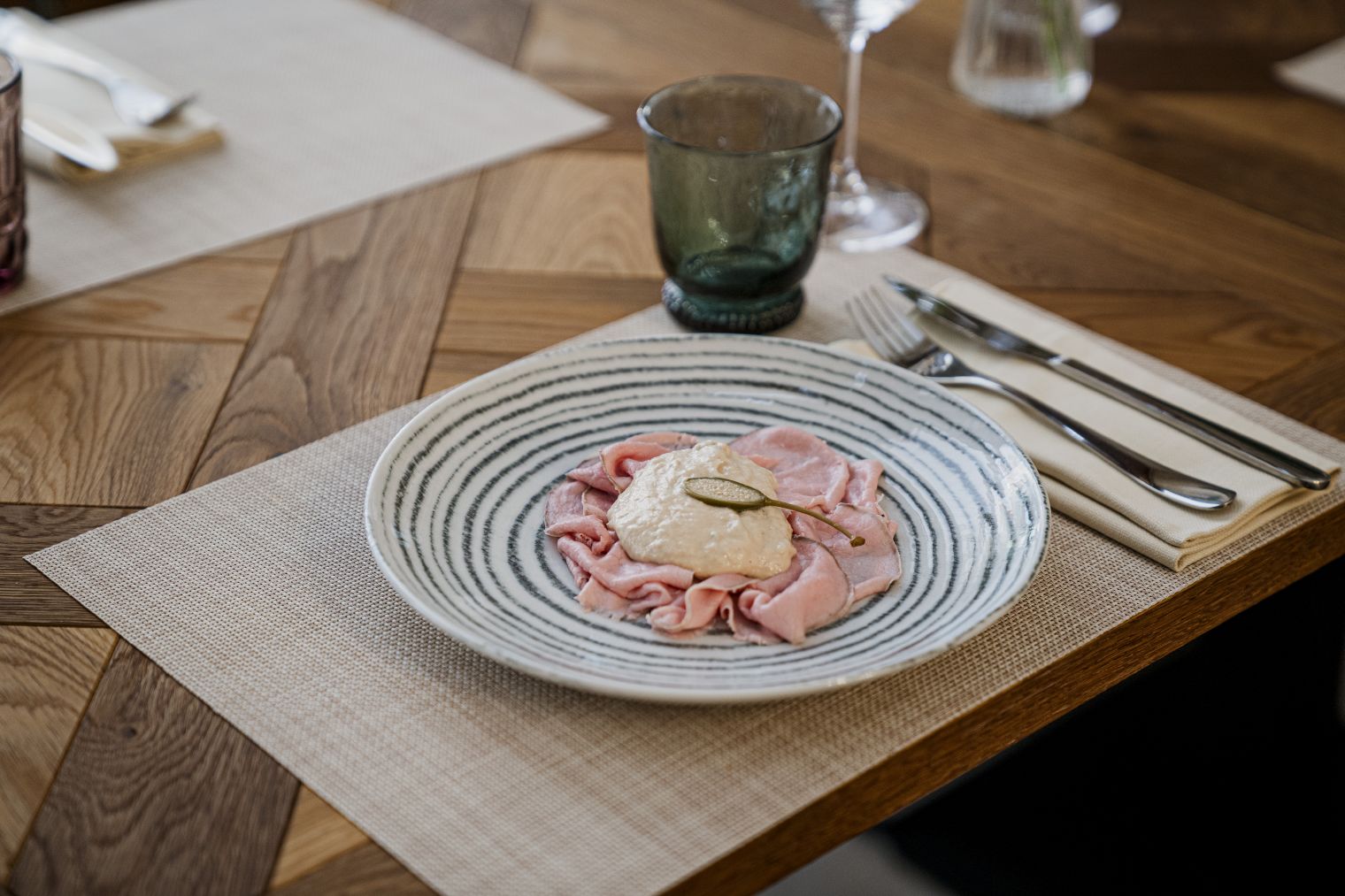
Un classico immancabile della tradizione piemontese
Dogliani DOCG: Production
Tannins, polyphenols and oxygenation: a difficult wine to vinify
TheDolcetto grape is considered one of the most difficult grapes to vinify because of the large amount of tannins, even higher than that of Nebbiolo, which are very difficult to handle. The end result is therefore due to the careful work of the producer, who is able to bring out the aromas and flavors of this wine based on a rational management of the fermentation process.
Compared to other wines, the polyphenols in Dogliani need good oxygenation to prevent the wine from tending to shrink once bottled.
Fermentation takes place in contact with the skins, with pumping over and punching down, given the must’s need for oxygen. With the choice of temperature and duration of fermentation, one decides from the outset whether one will want to have a young and colorful Dogliani or whether to aim for a Superiore, more important and structured, with the possibility of longer aging.
Next comes malolactic fermentation, which is necessary to prevent the wine from re-fermenting in the bottle, as was the case in the past. According to the specification,aging can take place in either steel or wood. It is up to the winemaker to decide which tools to use according to his experience. For wood, medium-sized barrels are preferred.
Finally, the bottling period varies according to different factors: in the past, spring was the chosen time, a custom that is still in vogue but leads to the risk of wine reduction. However, most wineries prefer to bottle the summer following the harvest or even the following year for Superiors. Many producers choose to age the wine further in the bottle, even two or three years, creating an unusual wine compared to what Dogliani traditionally is, with good aging potential.
The Superior
Unlike the “basic” Dogliani, the superior has a minimum aging period of 12 months, and a minimum alcohol content of 13% vol. In addition, its yield cannot exceed 7 tons per hectare.
Obtaining the DOCG “Superiore” is granted only to those wines of historical importance, produced for at least 10 years. A technical committee is in charge of examining and evaluating the organoleptic characteristics of the wine so that they fall within the parameters set by the specifications.
Time in wood
Time in bottle
Time to market
Grapes Yield
Meet the producers
Curiosities
A Divine Wine
Uncertain is the origin of the term Dolcetto, and there is lively debate among experts about it. However, the most accepted thesis is that it comes from the Piedmontese diminutive (understood as language) of“little bump” or small hill, hill.
Totally freaky, on the other hand, is the hypothesis that credits the origin of the term to the Piedmontese diminutive of “sweet” referring to a supposed sweetness of dolcetto grapes, this is because dolcetto grapes are not sweet at all and there is no diminutive of the term sweet in the Piedmontese of Dolcetto’s homeland.
As for the origin of the name Dogliani, although there is no certainty, it is thought to derive from the Latin “Dolium Januae,” the “Cup of Janus,” the goblet used by the visiting god to taste wine within sight of the town. The same cup would be depicted in the city’s coat of arms (opposite), where a lion holds a “doglia,” an ancient wine jug.



















